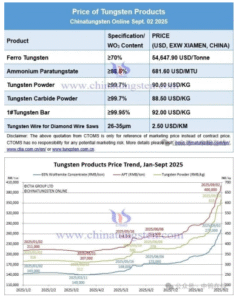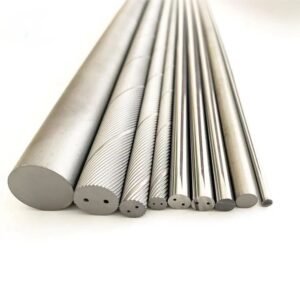Introduction
Choosing the right size of carbide insert is crucial for optimizing machining performance and achieving desired results. Carbide inserts, used in various cutting tools, significantly impact the efficiency, accuracy, and longevity of machining operations. Understanding how to select the appropriate size involves considering several factors, including the type of material being machined, the machining process, and specific tool requirements. This article will guide you through the essential aspects of determining the correct carbide insert size for your needs.
Understanding Carbide Inserts
Carbide inserts are replaceable cutting tools made from carbide, known for their hardness and durability. They are used in various machining operations, including turning, milling, and drilling. Inserts come in different shapes, sizes, and grades, each suited for specific applications and materials.
Factors to Consider When Choosing Insert Size
1. Material Being Machined
The type of material you are machining plays a significant role in determining the appropriate carbide insert size. Different materials, such as steel, aluminum, or cast iron, require different insert sizes and geometries. For instance:
- Steel: Harder materials like steel often require inserts with larger sizes and more robust cutting edges to withstand higher cutting forces.
- Aluminum: Softer materials like aluminum can often be machined with smaller inserts, which can provide finer finishes and faster cutting speeds.
2. Machining Process
The specific machining process influences the choice of insert size:
- Turning: For turning operations, the size of the insert should match the diameter of the workpiece. Larger inserts are generally used for heavy-duty turning operations, while smaller inserts are suitable for finishing cuts.
- Milling: In milling operations, the insert size should correspond to the size of the milling cutter. Larger inserts are often used for roughing operations, while smaller inserts are used for finishing.
3. Cutting Conditions
Cutting conditions such as cutting speed, feed rate, and depth of cut affect the choice of insert size:
- Cutting Speed: Higher cutting speeds may require larger inserts with better heat dissipation properties.
- Feed Rate and Depth of Cut: Larger inserts can handle higher feed rates and depths of cut, while smaller inserts are suitable for lighter cuts.
4. Tool Holder Compatibility
The size of the carbide insert must be compatible with the tool holder. Tool holders are designed to accommodate specific insert sizes, so it’s essential to ensure that the insert you choose fits properly into the tool holder.
5. Insert Geometry
Inserts come in various geometries, such as square, triangular, and round. The geometry of the insert affects its cutting performance and suitability for different applications. For example:
- Square Inserts: Provide good stability and are often used for general-purpose machining.
- Triangular Inserts: Offer three cutting edges and are suitable for turning operations with high cutting forces.
- Round Inserts: Provide smooth cutting and are used for finishing operations.
6. Tool Life and Wear
The tool life and wear resistance of the insert can also influence the size selection. Larger inserts generally offer longer tool life and better wear resistance, while smaller inserts may wear out more quickly but are often used for more precise cuts.
How to Determine the Right Size
1. Consult Manufacturer Specifications
Always refer to the manufacturer’s specifications and recommendations for the carbide inserts. Manufacturers provide detailed information on the appropriate insert sizes for various applications and materials.
2. Assess the Workpiece and Tool Requirements
Evaluate the dimensions of the workpiece and the tool holder. Ensure that the insert size matches the requirements of both the workpiece and the tool holder.
3. Consider the Application
Determine the specific application and machining conditions. Choose an insert size that aligns with the cutting speed, feed rate, and depth of cut required for the job.
4. Seek Expert Advice
If in doubt, seek advice from machining experts or suppliers. They can provide valuable insights and recommendations based on your specific needs and applications.
Conclusion
Selecting the right size of carbide insert is essential for achieving optimal machining performance and ensuring the longevity of your tools. By considering factors such as the material being machined, the machining process, cutting conditions, tool holder compatibility, insert geometry, and tool life, you can make an informed decision. Always refer to manufacturer specifications and seek expert advice when needed to ensure that you choose the best carbide insert size for your specific requirements. Making the right choice will not only improve your machining efficiency but also enhance the overall quality of your finished products.
For further assistance in selecting the appropriate carbide insert size, feel free to contact us at [your contact information]. We are here to help you make the best choice for your machining needs.





